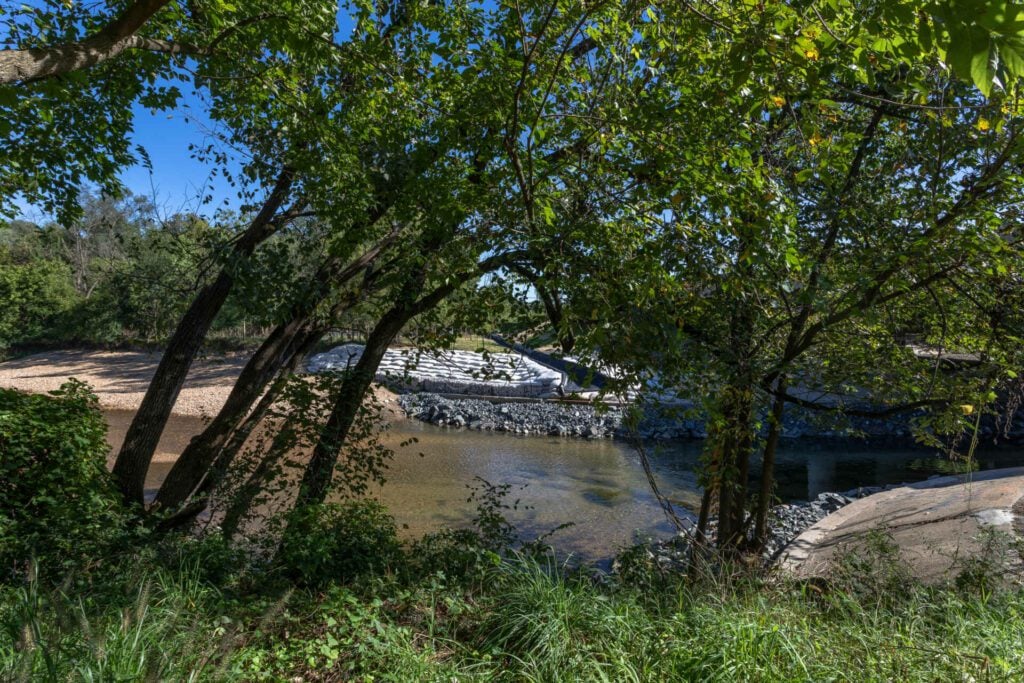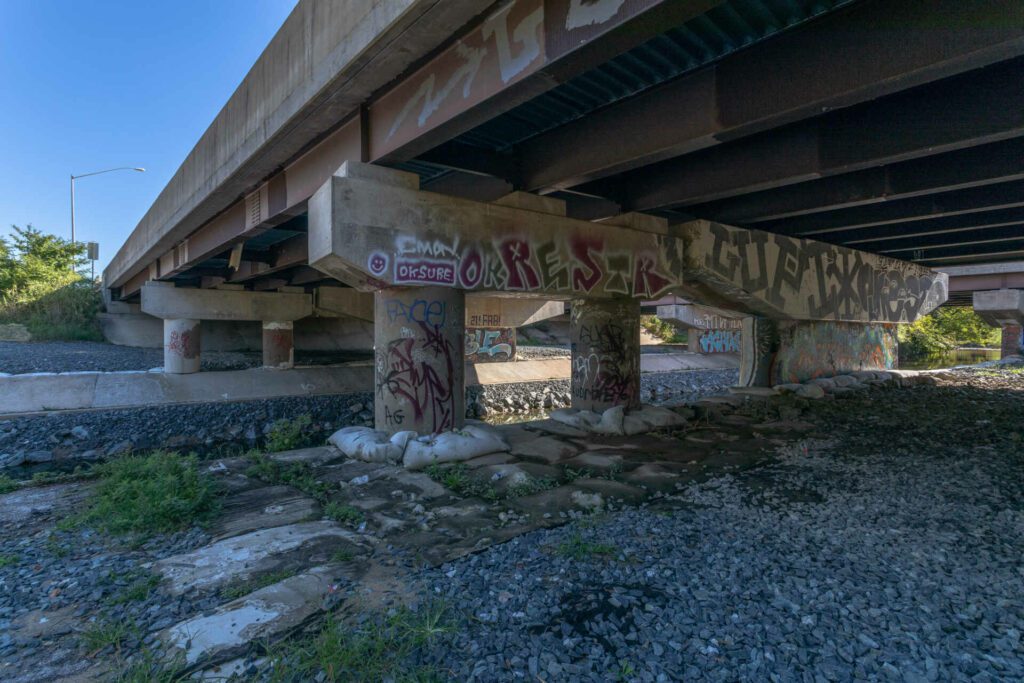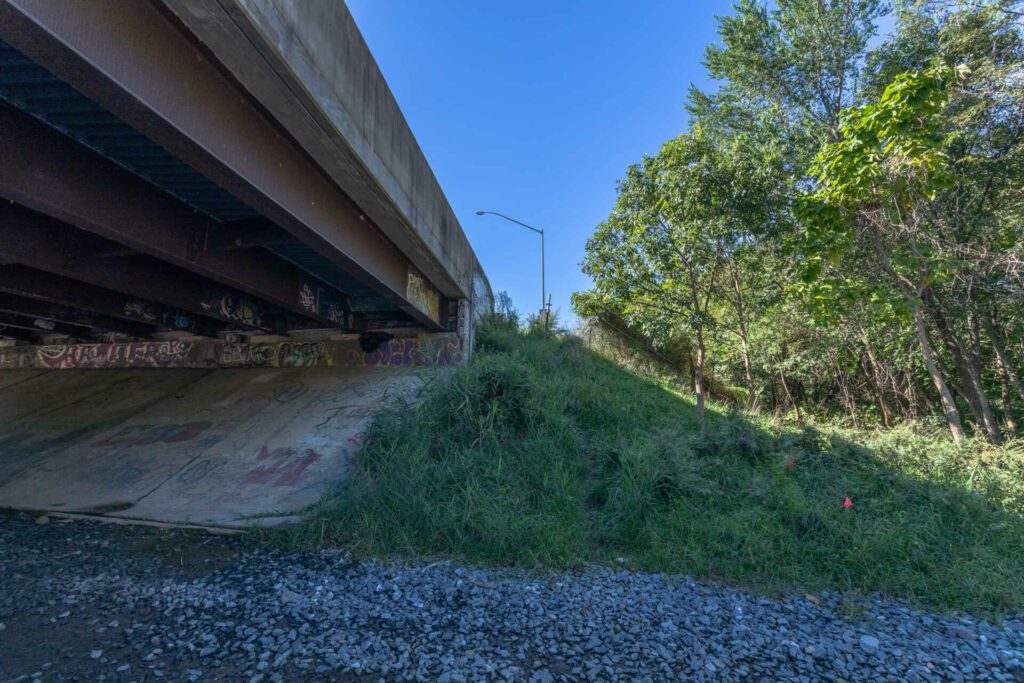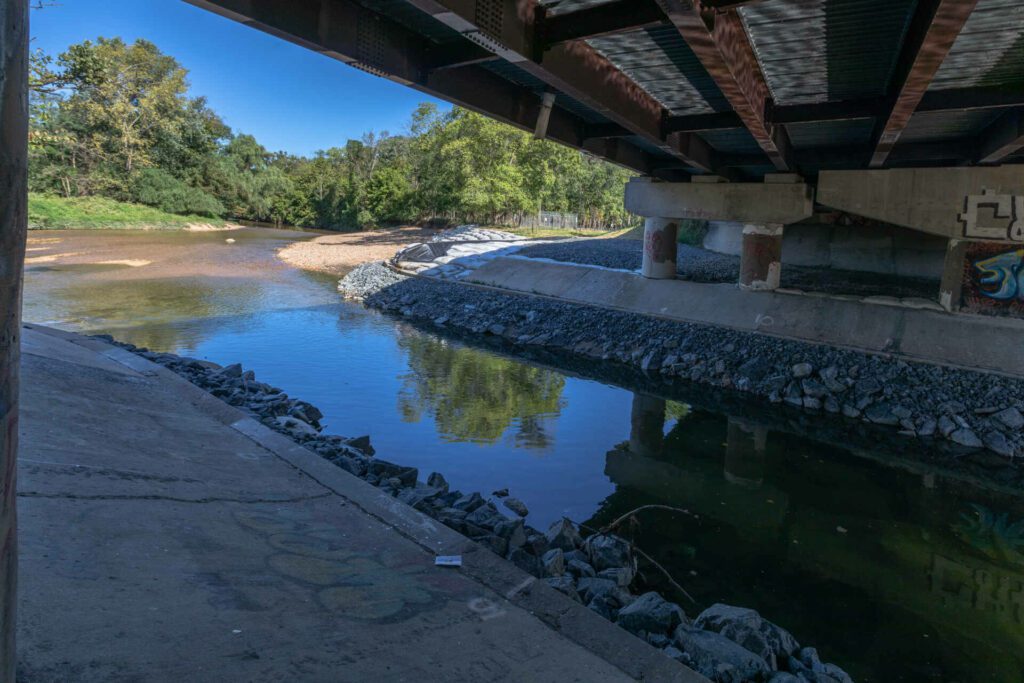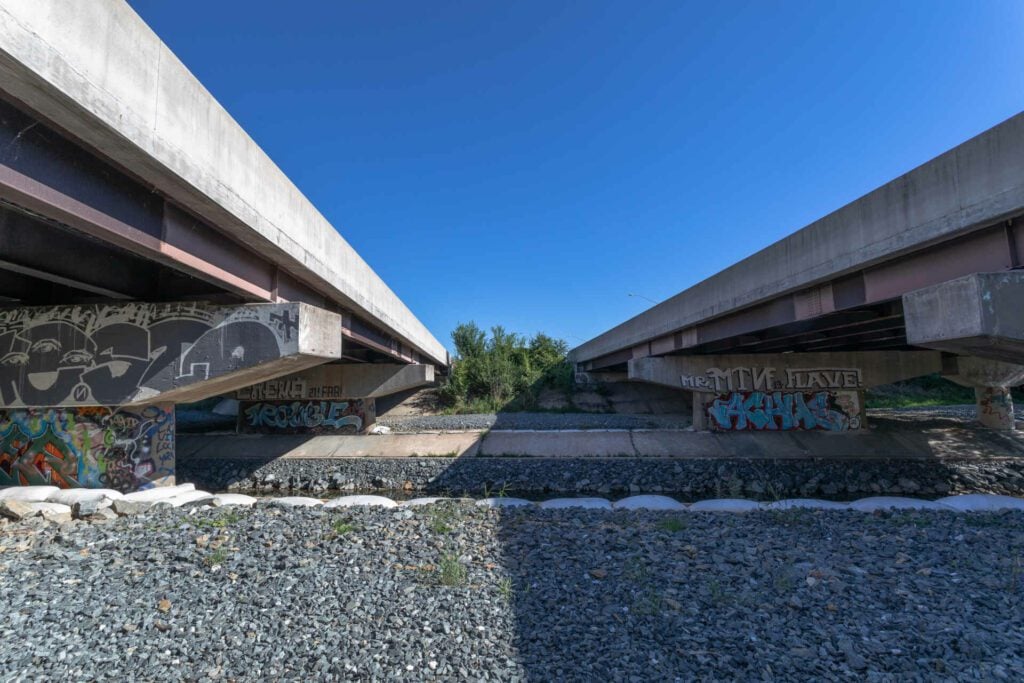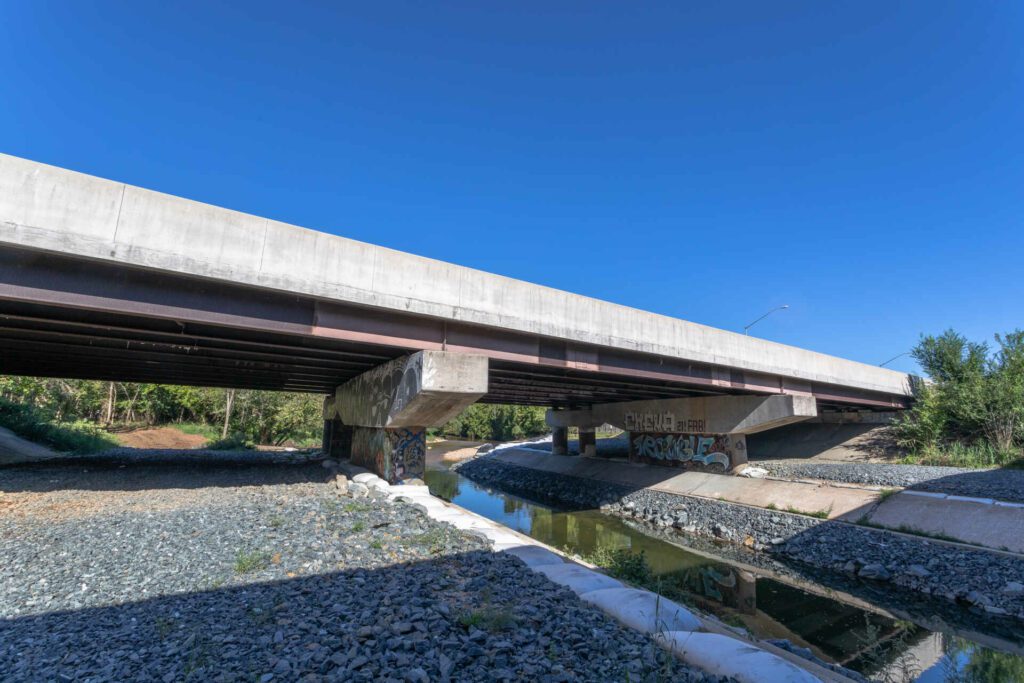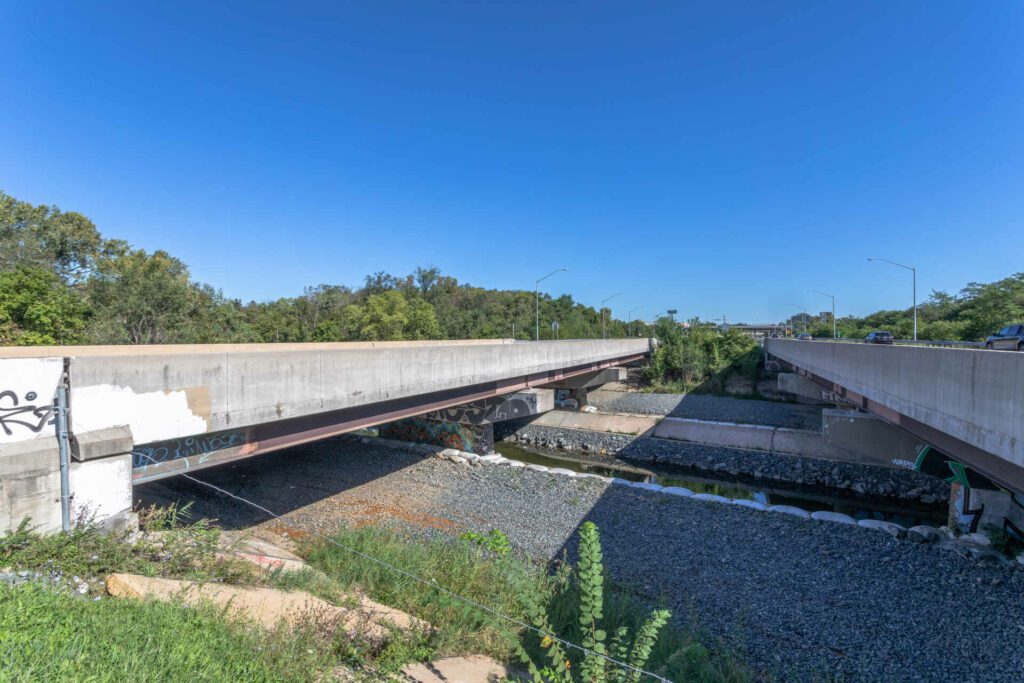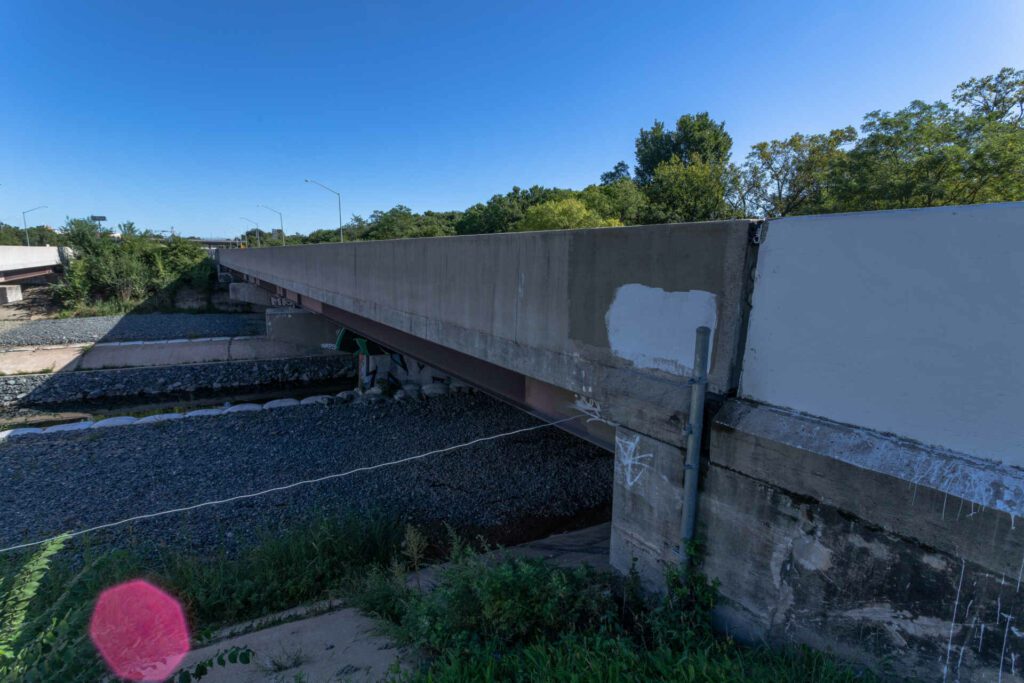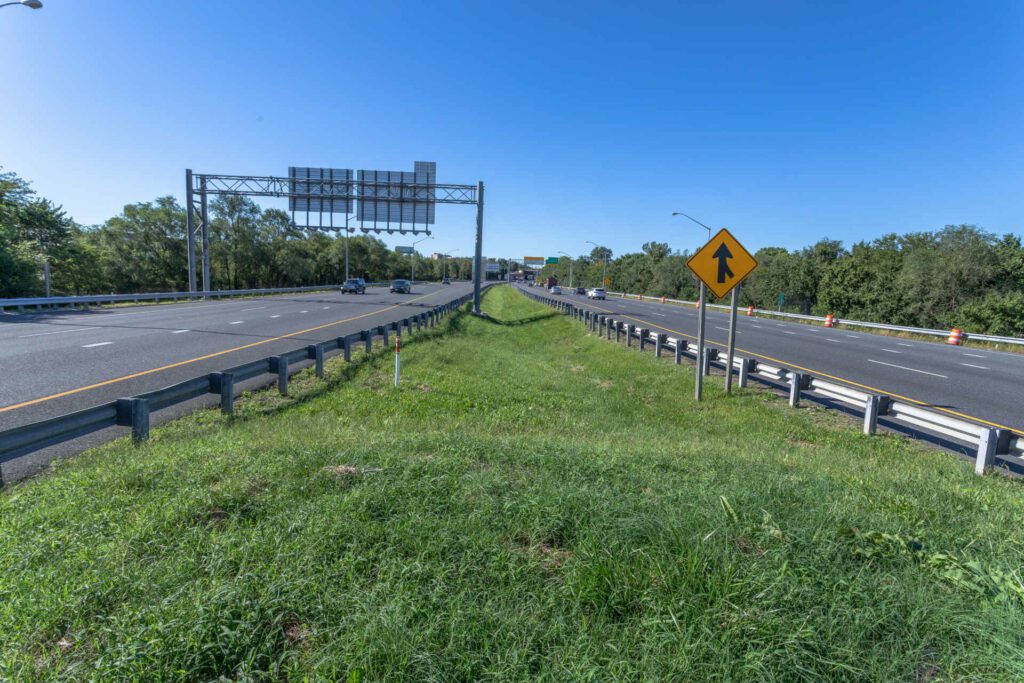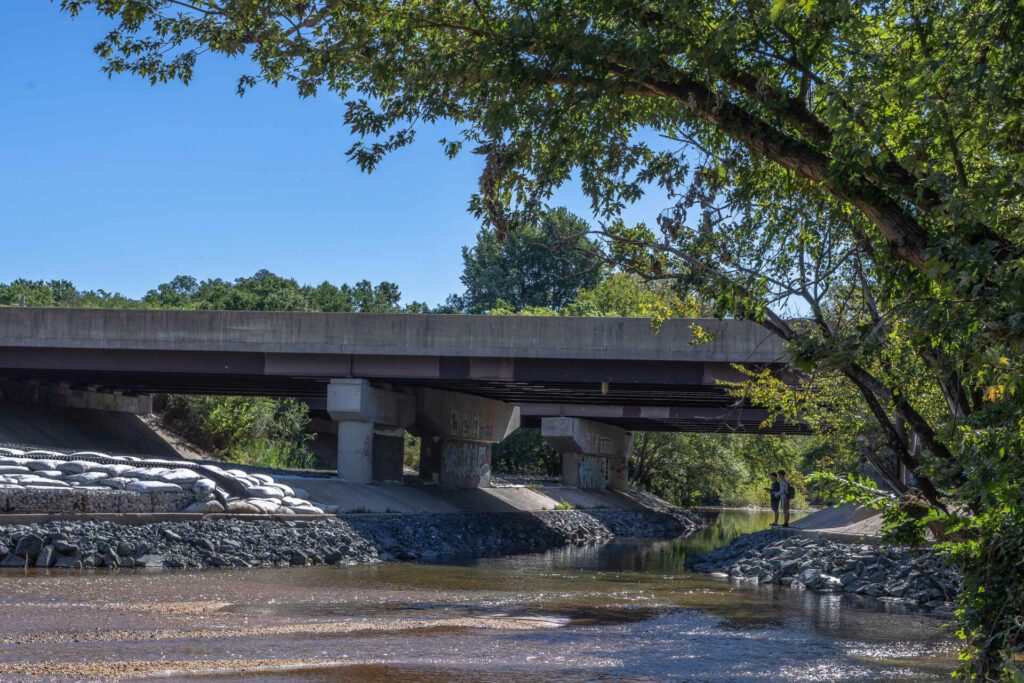Show Notes
RK&K provided a multi-disciplinary erosion response, led by Laura (Lori) Magoon, PE, David Black, PE and Robert Dunning, to address the severe stream bank erosion and scour at the southbound I-895 bridge crossing Herring Run in northeast Baltimore, Maryland.
Our team discussed innovation, and how successful strategy and planning leads to resilient and sustainable solutions for clients.
Why is scour mitigation so important? What would the public notice at a site like this if scour went unchecked?
Scour, caused by fast flowing water, can lower the stream bed, compromising the integrity of the bridge. Stream scour is the most common cause of bridge failure in the United States at upwards of 60% of all bridge failures. Mitigating bridge scour is crucial to ensuring the safety of the traveling public. If scour goes unchecked the bridge foundations (piers) could settle and become unstable to possibly lead to partial or complete loss of the bridge span(s).
RK&K was asked to provide an emergency assessment of severe stream bank erosion and scour at the site. What did our team find during that assessment?
We found the active upstream bank erosion extended scour close to the north bridge pier which made the pier vulnerable as the erosion would likely expand with future storm events. Part of our emergency assessment included taking “soundings” in the stream where the depth of the stream bed throughout the channel is measured in a grid fashion. We discovered the stream bed (i.e., scour) was very deep along the south bridge pier presenting a second critical issue since the piers were founded on either shallow piles or spread footings.
RK&K provided a multi-disciplinary response to address the severe stream bank erosion and scour at the southbound I-895 bridge crossing Herring Run in Baltimore, Maryland.
Our team’s discussion mentions multi-discipline coordination and innovation to find an optimum solution. What were the short-term and long-term solutions? What were all the disciplines involved?
The multiple disciplines included our staff from Structures (myself & Edgar Lorete), Water Resources (David Black), Geotech (Scott Berkheimer), Natural Resources (Greg O’Hare & Karley Routh), and Construction Management (Bob Dunning & Patrick Di Nicola) groups. In addition, members of the Maryland Transportation Authority’s (MDTA) Structures, Environmental, and Construction divisions were deeply involved and oversaw the project.
The short-term measure was to fill the deep scour areas along the south pier to prevent the stream from washing away the soil supporting the south pier. This approach was coupled by continually monitoring the condition of the stream bed by repeating the soundings after each threshold storm event. We could effectively monitor the intensity of each storm via an app that posted data from a U.S. Geological Survey (USGS) stream gage located just upstream from the bridge.
For the mid-term solution the team evaluated multiple alternatives and selected the one that fit the site constraints and used readily available materials. The repair of the upstream embankment used a gabion wall founded on grout bags and placed stone along the full length of the stream under the bridge along both piers to protect against scour.
The long-term solution is still being developed that will address the bridge and the flashy conditions of the stream.
What were some of the unique challenges to this project?
Foremost was working in the flood zone of a flashy, unpredictable water environment. We had to keep one eye on the ever-changing stream conditions from storm events and adjust accordingly during repair design. Another challenge was the limited access and unstable embankment at the site. This directly influenced our recommended repair options since large cranes were needed for some of the alternatives (e.g., steel sheet piling) that could not fit nor safely be supported. This led us to the grout bag-gabion wall alternative that only required small equipment and hand work.
When it comes to scour assessment and mitigation, what are the most critical aspects of the project?
With erosion assessment and mitigation, it is critical to compute the greatest magnitude (depth) of scour that could occur based on the site conditions. Geotech and Structural engineers used this information to determine if the structure could be compromised. If so, then action needs to be taken to protect the structure.
RK&K provided a multi-disciplinary response to address the severe stream bank erosion and scour at the southbound I-895 bridge crossing Herring Run in Baltimore, Maryland.
What makes the selected approach so unique and innovative?
The team was able to obtain emergency authorization from the Maryland Department of the Environment (MDE) to work in the stream to place the grout bags and forgo a traditional stream diversion (e.g., a pump around) that really expedited the construction. Also notable is the bridge is within the Western Coastal Plain but just east of the Piedmont which results in streams having high levels of sand and gravel. This can lead to channels creating a series of in-stream bars. These sediment bars can adversely affect the stream angle of attack on the bridge so can worsen scour. Our approach moved that overload of in-stream sediment directly to the opposite stream bank upstream of the bridge to further reinforce the bank repair area and improve the stream’s angle of attack to the bridge.
We chatted about “resiliency” in another nearby project (Minebank Run). In what ways did the project provide a resilient solution for the Herring Run project?
Resiliency is extremely important for infrastructure and is evolving. For Minebank Run, the valley and stream were modified somewhat dramatically due to historical impacts that reduced its capacity to move storm flow safely downstream. This Herring Run project has elements of resiliency since it addressed the stream and bridge together. The bridge is more secure to withstand intense storms due to the repairs, and MDTA is monitoring to keep on top of stream changes as it affects the bridge.
About the authors
Lori Magoon, PE
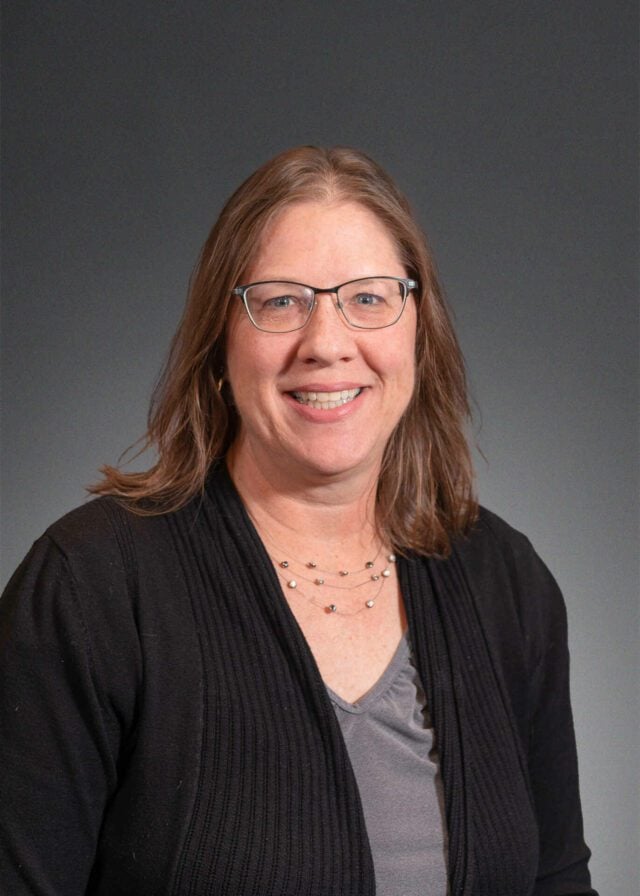
Lori Magoon, PE
Senior Project Delivery Leader Laura (Lori) Magoon, PE has extensive experience in bridge condition inspection, using snooper trucks, bucket trucks, suspended scaffolding, boats and ladders, preparing recommendation reports for structural preservation and rehabilitation and developing contract plans, specification and estimates for concrete, steel and pier strengthening repair projects.
She has extensive experience in design of new and rehabilitated structures over highways, waterways and railroads, deck and superstructure replacements, overlays, widenings, and culverts and retaining walls. Her skills include asset management policy and life cycle cost analysis development. She routinely manages projects that require significant oversight of highway design, H&H/streams/scour, traffic, and MOT, permitting, geotechnical, SWM/ESC and surveys. She completes constructability reviews, cost estimates and has managed the development of documents for project milestones and advertisement.
David Black, PE
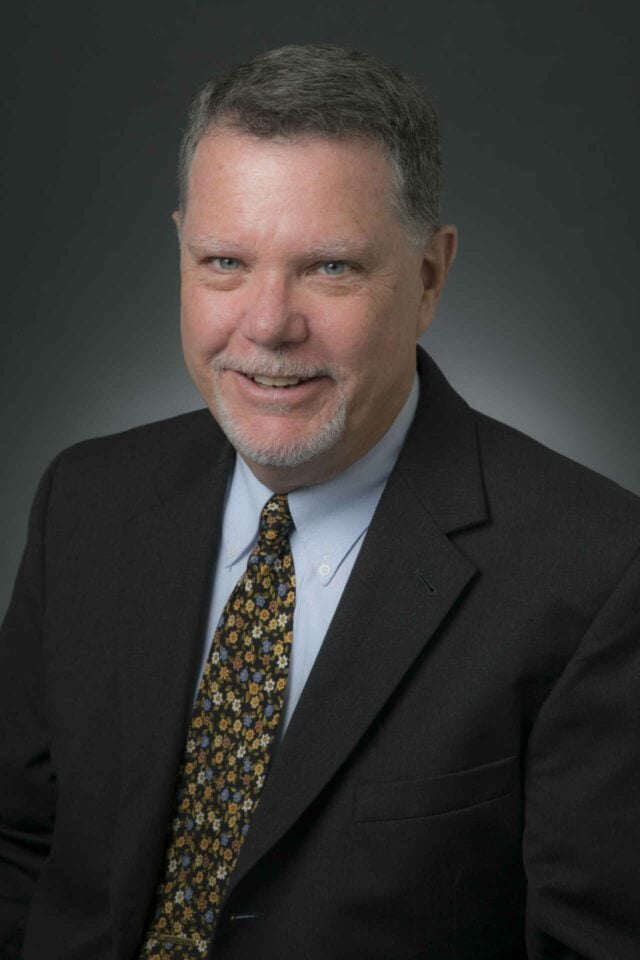
David Black, PE
Project Delivery Leader David Black, PE has extensive experience in hydrology & hydraulics, design and construction of stream restoration projects, wetlands, stormwater management facilities, fish passage, and water quality BMP’s, plus wetland and waterway permitting on the State and Federal level.
His experience also includes restoration projects for MS4/TMDL compliance. David has completed Rosgen’s Fluvial Geomorphology for Engineers (Level I), River Morphology and Applications (Level II), River Assessment and Monitoring (Level III) and River Restoration and Natural Channel Design (Level IV). David is also a Maryland Land Surveyor in Training.
